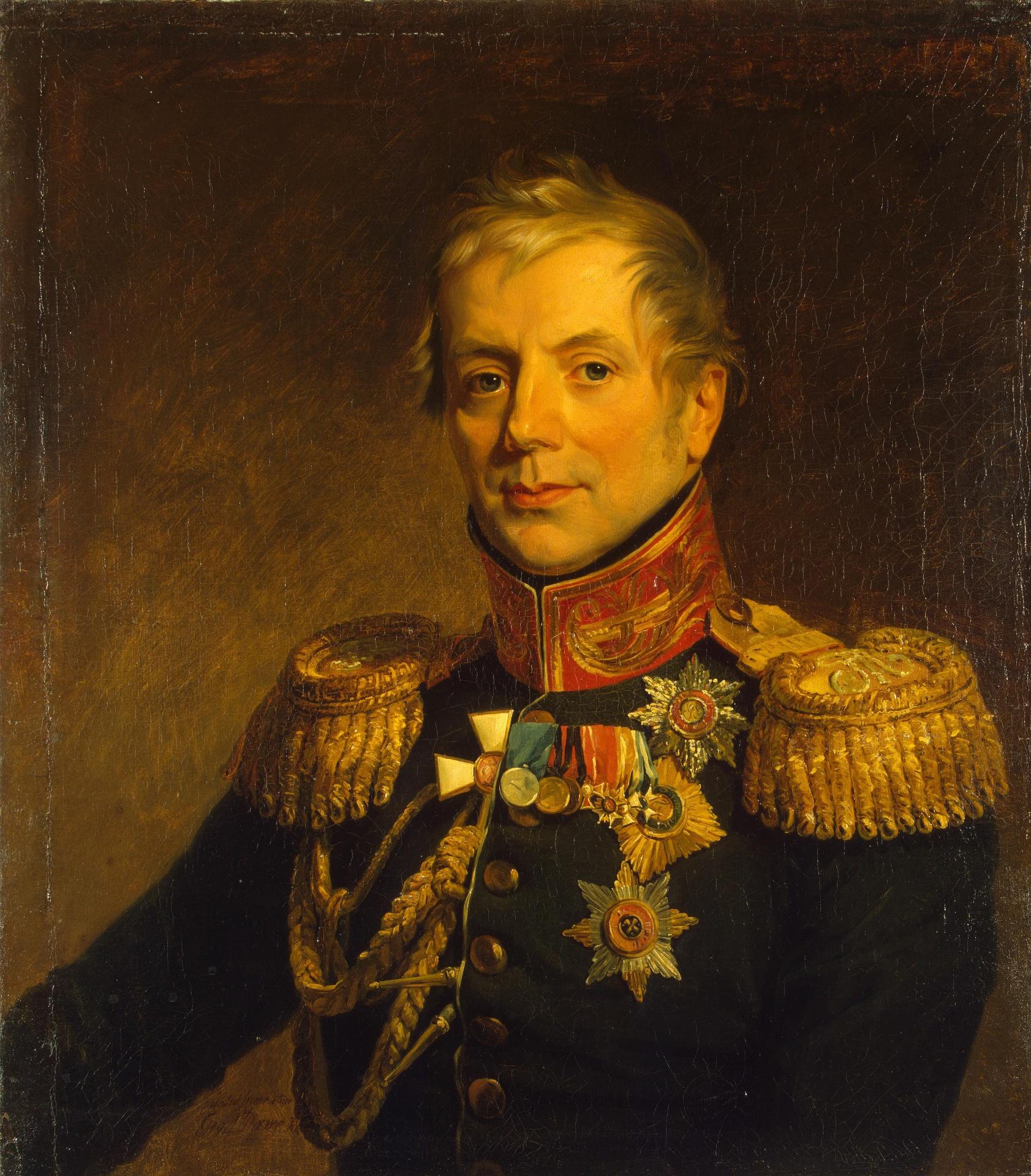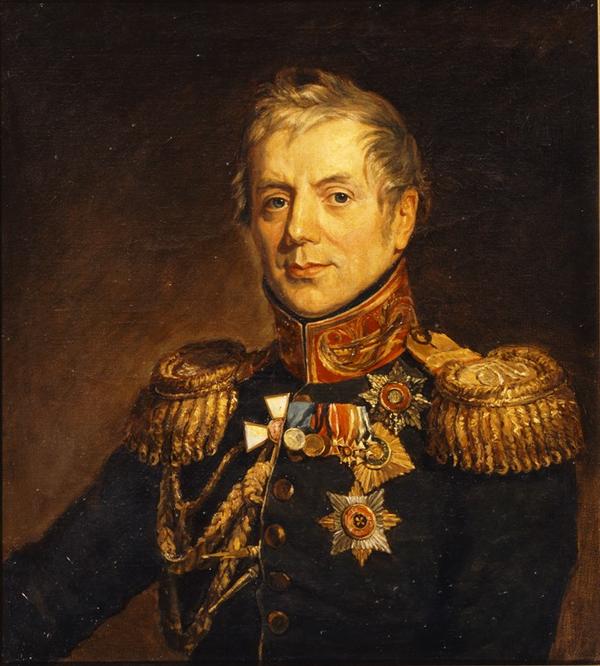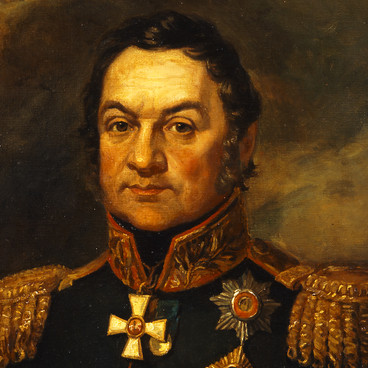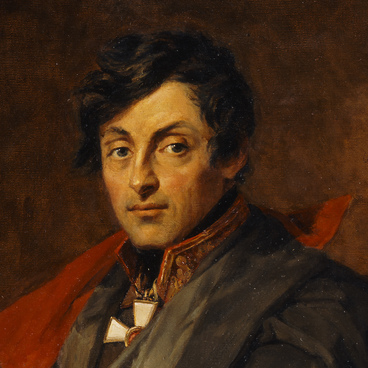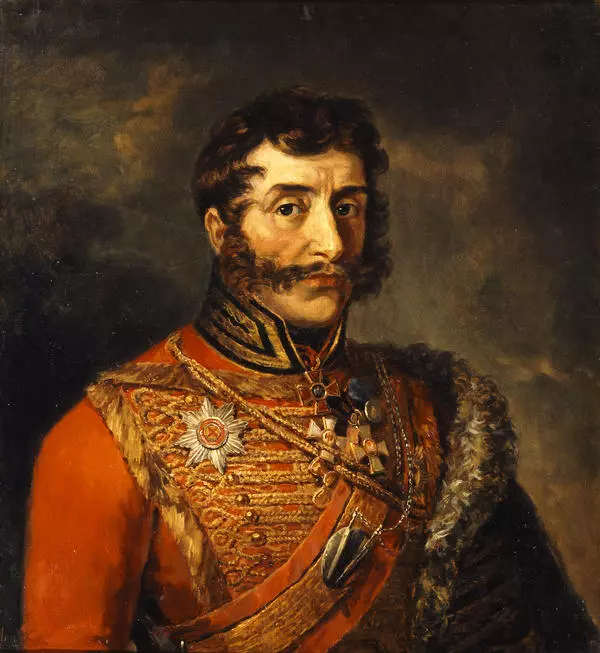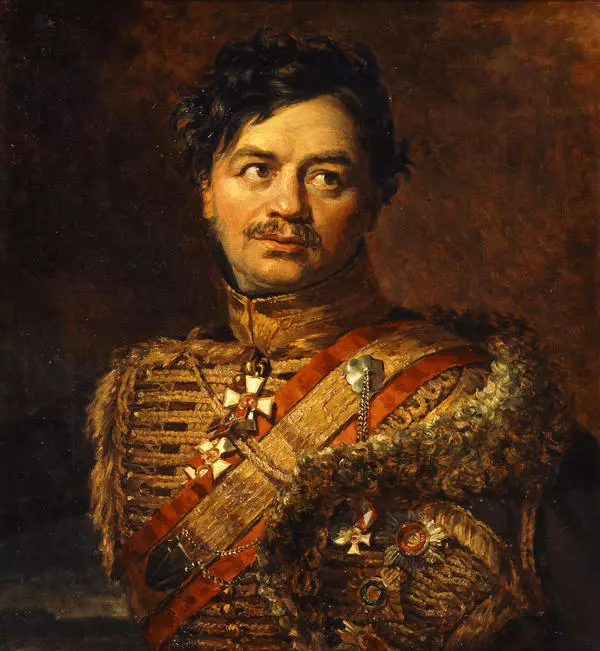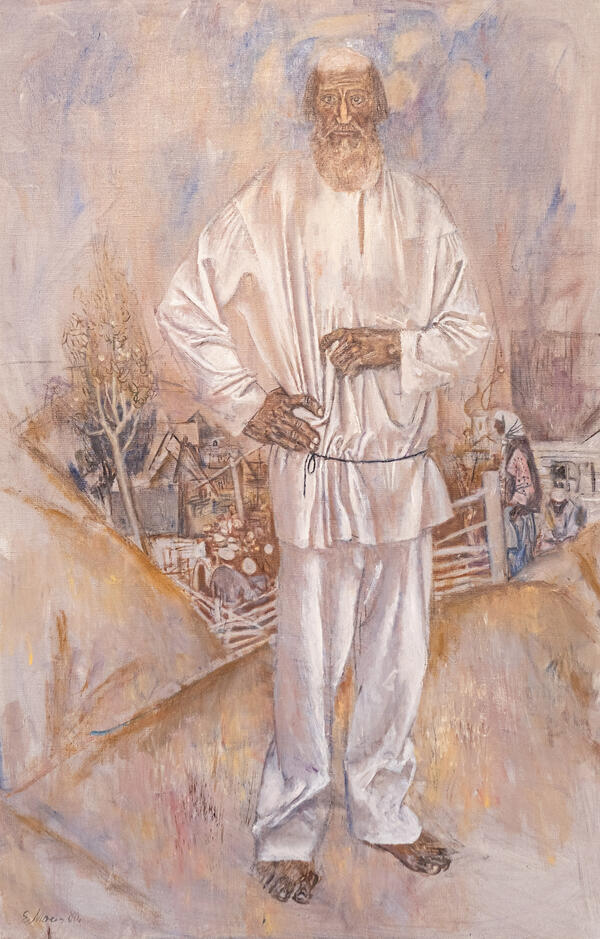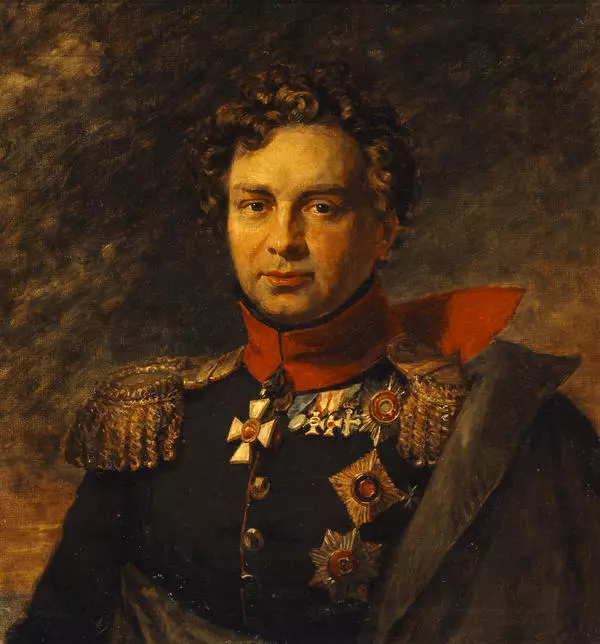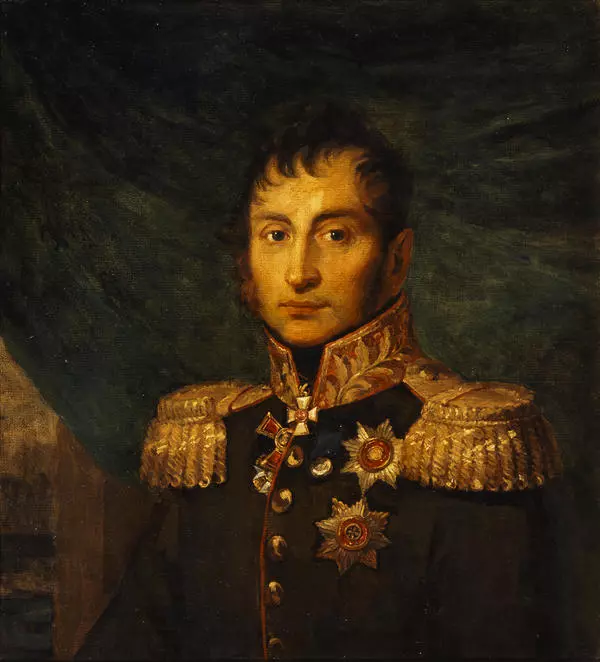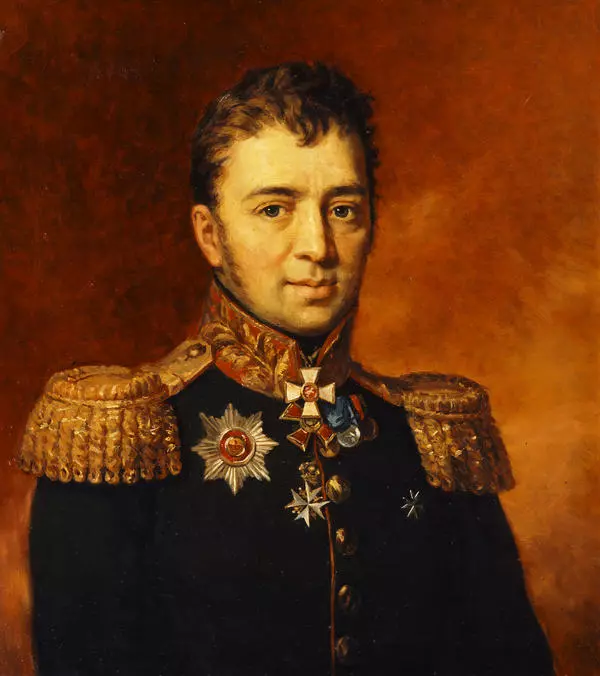Peter Konovnitsyn was brought up in a noble family of the St. Petersburg province, studied in Artillery and Engineering Gentry Cadet Corps in St. Petersburg. At the age of 21, he joined active military service in the Semyonovsky Life Guard Regiment as a petty officer (praporshchik).
Konovnitsyn served in the Russo-Swedish War of 1788–1790. For his bravery during the Polish campaign of 1794, he was awarded the 4th Class Order of St. George, after three years of service he became a Major General.
For his merits during the Russian-Swedish war of 1808—1809, Konovnitsyn was promoted to the rank of Lieutenant General and awarded the 3rd Class Order of St. George. In 1809, the General was appointed an honorary Сhief of the Chernigov Infantry Regiment and Commander of the 3rd Infantry Division, which, according to Alexander I, he made ‘exemplary’.
During the Napoleon’s Russian campaign of 1812, the 3rd Infantry Division distinguished itself in the battles of Kakuvyachin, Smolensk, and Valutina Gora. On August 5, during the battle of Smolensk, Konovnitsyn was wounded in the right arm but did not leave the battlefield. Since August 16, he commanded the rearguard of the Russian army, covering its retreat to Borodino.
During the Battle of Borodino, on August 26, Konovnitsyn was temporarily given a command of the 2nd Western army after its Commander-in-Chief, Prince Bagration, was fatally wounded According to Konovnitsyn’s own remark, that battle was ‘the Day of the Last Judgment’: in a series of successful counterattacks, his division sustained heavy loses of killed and wounded; the General himself was twice contused and at one instance he barely survived — a cannonball tore off the edges of his uniform. For his distinguished service during the Battle of Borodino, Konovnitsyn was awarded a gold sword studded with diamonds bearing the inscription ‘For bravery’.
The General took part in the battles of Tarutino, Maloyaroslavets, Vyazma, and Krasnoye. Late in 1812, Konovnitsyn received the 2nd Class Order of St. George. On December 20, he was appointed General-Adjutant of His Own Majesty’s Suite and given command of the Grenadier Corps, one of the best in the Russian army.
During the campaign of 1813 in Saxony, Konovnitsyn was severely wounded in the leg in the Battle of Lützen. After recovery, he the General-Adjutant served at the Emperor Alexander I’s headquarters. For his merits during the Battle of the Nations of Leipzig, Konovnitsyn was awarded the Order of Saint Vladimir, 1st Class.
In 1817, Konovnitsyn was promoted to a full general officer’s rank (General of the Infantry). In 1815–1819, he was a Minister of War, a Senator, and director of Military Schools in St. Petersburg and Tsarskoye Selo Lyceum. In 1819, Konovnitsyn was made a count of the Russian Empire.
His portrait was painted in the 1820s by the English artist George Dawe for the Military Gallery of the Winter Palace. It is unknown whether the artist painted this portrait from life because Konovnitsyn died in 1822. Among the possible prototypes were a portrait by Orest Kiprensky and an engraving by Francesco Vendramini based on a drawing by Louis de Saint-Aubin. Museum-Panorama “Battle of Borodino” houses a copy of Konovnitsyn’s portrait painted in 1964.
Konovnitsyn served in the Russo-Swedish War of 1788–1790. For his bravery during the Polish campaign of 1794, he was awarded the 4th Class Order of St. George, after three years of service he became a Major General.
For his merits during the Russian-Swedish war of 1808—1809, Konovnitsyn was promoted to the rank of Lieutenant General and awarded the 3rd Class Order of St. George. In 1809, the General was appointed an honorary Сhief of the Chernigov Infantry Regiment and Commander of the 3rd Infantry Division, which, according to Alexander I, he made ‘exemplary’.
During the Napoleon’s Russian campaign of 1812, the 3rd Infantry Division distinguished itself in the battles of Kakuvyachin, Smolensk, and Valutina Gora. On August 5, during the battle of Smolensk, Konovnitsyn was wounded in the right arm but did not leave the battlefield. Since August 16, he commanded the rearguard of the Russian army, covering its retreat to Borodino.
During the Battle of Borodino, on August 26, Konovnitsyn was temporarily given a command of the 2nd Western army after its Commander-in-Chief, Prince Bagration, was fatally wounded According to Konovnitsyn’s own remark, that battle was ‘the Day of the Last Judgment’: in a series of successful counterattacks, his division sustained heavy loses of killed and wounded; the General himself was twice contused and at one instance he barely survived — a cannonball tore off the edges of his uniform. For his distinguished service during the Battle of Borodino, Konovnitsyn was awarded a gold sword studded with diamonds bearing the inscription ‘For bravery’.
The General took part in the battles of Tarutino, Maloyaroslavets, Vyazma, and Krasnoye. Late in 1812, Konovnitsyn received the 2nd Class Order of St. George. On December 20, he was appointed General-Adjutant of His Own Majesty’s Suite and given command of the Grenadier Corps, one of the best in the Russian army.
During the campaign of 1813 in Saxony, Konovnitsyn was severely wounded in the leg in the Battle of Lützen. After recovery, he the General-Adjutant served at the Emperor Alexander I’s headquarters. For his merits during the Battle of the Nations of Leipzig, Konovnitsyn was awarded the Order of Saint Vladimir, 1st Class.
In 1817, Konovnitsyn was promoted to a full general officer’s rank (General of the Infantry). In 1815–1819, he was a Minister of War, a Senator, and director of Military Schools in St. Petersburg and Tsarskoye Selo Lyceum. In 1819, Konovnitsyn was made a count of the Russian Empire.
His portrait was painted in the 1820s by the English artist George Dawe for the Military Gallery of the Winter Palace. It is unknown whether the artist painted this portrait from life because Konovnitsyn died in 1822. Among the possible prototypes were a portrait by Orest Kiprensky and an engraving by Francesco Vendramini based on a drawing by Louis de Saint-Aubin. Museum-Panorama “Battle of Borodino” houses a copy of Konovnitsyn’s portrait painted in 1964.


